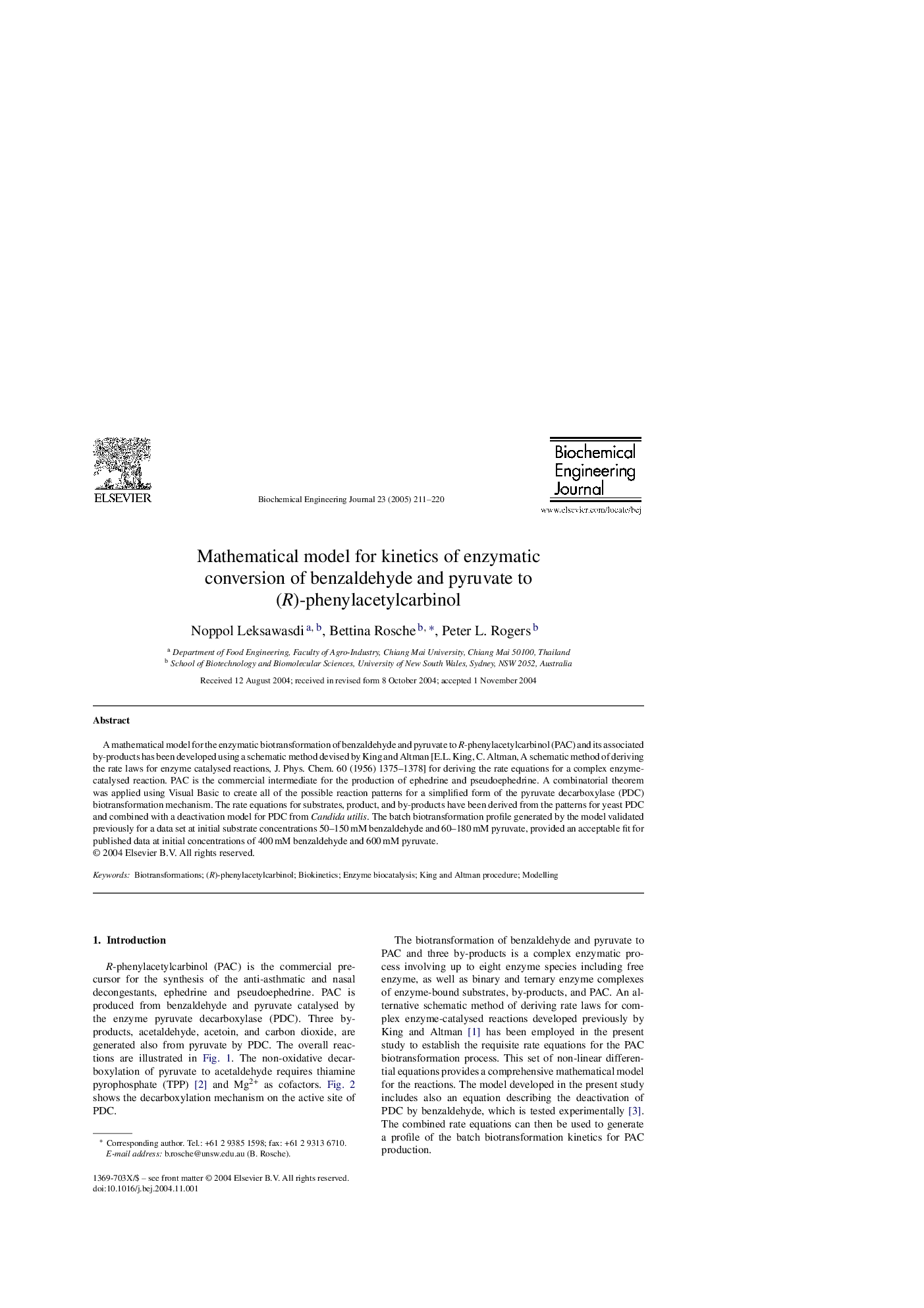| کد مقاله | کد نشریه | سال انتشار | مقاله انگلیسی | نسخه تمام متن |
|---|---|---|---|---|
| 10161236 | 299 | 2005 | 10 صفحه PDF | دانلود رایگان |
عنوان انگلیسی مقاله ISI
Mathematical model for kinetics of enzymatic conversion of benzaldehyde and pyruvate to (R)-phenylacetylcarbinol
دانلود مقاله + سفارش ترجمه
دانلود مقاله ISI انگلیسی
رایگان برای ایرانیان
کلمات کلیدی
موضوعات مرتبط
مهندسی و علوم پایه
مهندسی شیمی
بیو مهندسی (مهندسی زیستی)
پیش نمایش صفحه اول مقاله

چکیده انگلیسی
A mathematical model for the enzymatic biotransformation of benzaldehyde and pyruvate to R-phenylacetylcarbinol (PAC) and its associated by-products has been developed using a schematic method devised by King and Altman [E.L. King, C. Altman, A schematic method of deriving the rate laws for enzyme catalysed reactions, J. Phys. Chem. 60 (1956) 1375-1378] for deriving the rate equations for a complex enzyme-catalysed reaction. PAC is the commercial intermediate for the production of ephedrine and pseudoephedrine. A combinatorial theorem was applied using Visual Basic to create all of the possible reaction patterns for a simplified form of the pyruvate decarboxylase (PDC) biotransformation mechanism. The rate equations for substrates, product, and by-products have been derived from the patterns for yeast PDC and combined with a deactivation model for PDC from Candida utilis. The batch biotransformation profile generated by the model validated previously for a data set at initial substrate concentrations 50-150Â mM benzaldehyde and 60-180Â mM pyruvate, provided an acceptable fit for published data at initial concentrations of 400Â mM benzaldehyde and 600Â mM pyruvate.
ناشر
Database: Elsevier - ScienceDirect (ساینس دایرکت)
Journal: Biochemical Engineering Journal - Volume 23, Issue 3, 1 May 2005, Pages 211-220
Journal: Biochemical Engineering Journal - Volume 23, Issue 3, 1 May 2005, Pages 211-220
نویسندگان
Noppol Leksawasdi, Bettina Rosche, Peter L. Rogers,